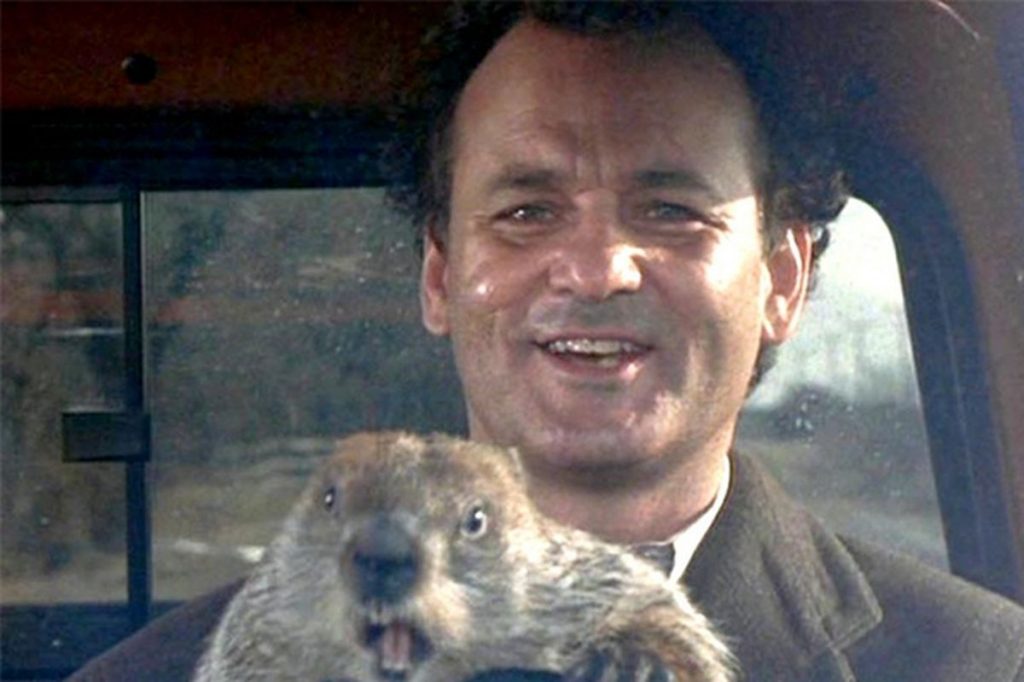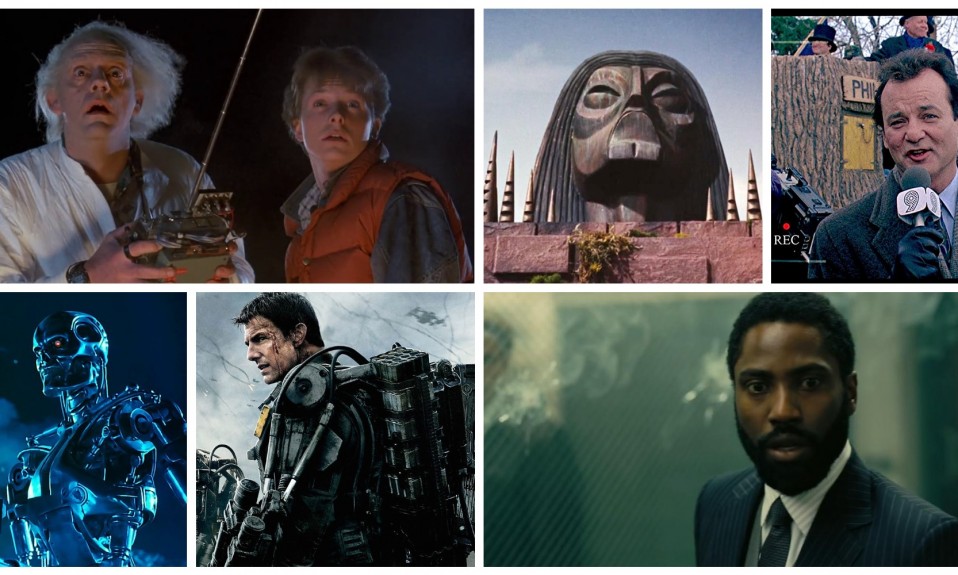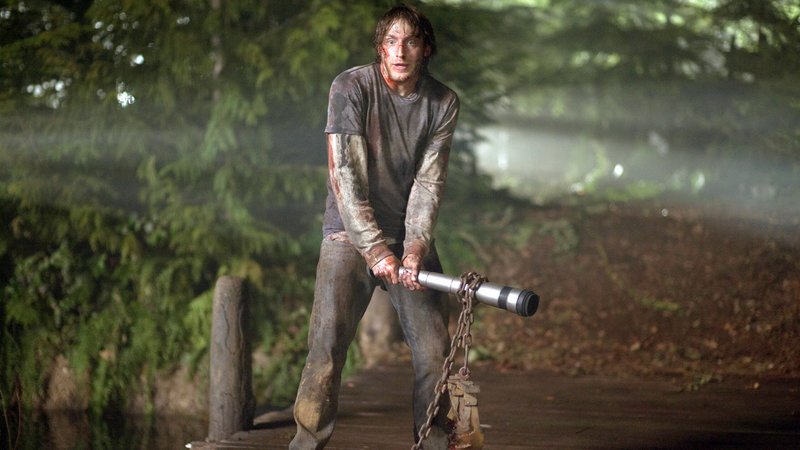Christoper Nolan’s latest film is the epic Tenet which plays a lot with the idea of time and moving through time. This has long been a feature of Nolan’s films – whether explicitly messing with time like in Interstellar or the non-linear storytelling of Memento. But Nolan is hardly the first filmmaker to explore time travel, with some saying the first time travel movie A Connecticut Yankee in King Arthur’s Court from 1921. What lessons can a film fan learn should they ever find themselves travelling in time?
Protect The Timeline

We would all do well to remember Abe Simpson’s advice to his son Homer on his wedding day “If you ever travel back in time, don’t step on anything because even the tiniest change can alter the future in ways you can’t imagine.” A dire warning issued to virtually every time traveller is to protect the timeline – do not do anything that will change the present or future. This is explored wonderfully in Back To The Future Part II, Marty buys a sports almanac in the future with the idea of using it to place winning bets in his present. Unfortunately, the almanac winds up in the hands of villain Biff who gives it to his younger self. When Marty returns to his present he finds a very different Hill Valley, beset with crime and corruption in which multi-millionaire Biff essentially runs the town, his mother is married to Biff and his father is dead – later revealed to have been murdered by Biff. The rest of the film is Marty and Doc trying to restore the original timeline by getting the almanac back.
Beware of Paradoxes

There are a number of paradoxes that can beset the unwary time traveller – the most famous being The Grandfather Paradox and the Bootstrap Paradox. The Terminator franchise is a classic example of the Bootstrap Paradox, taking its name from the literal impossibility of a person “pulling themselves up by their bootstraps”. Essentially this is when by going back in time you invent or create something that already existed in your time – meaning its actual moment of creation is lost in a paradox. In The Terminator franchise a war is raging between humans and machines in the distant future (the year 1997), the computers send a killer robot, a Terminator, back in time to kill the mother of the human leader. This terminator is defeated and destroyed…or nearly destroyed, parts of it are salvaged by a company that then go on to create the very computer system fighting humankind. The groundbreaking technology that enabled the creation of artificial intelligence is only possible because that artificial intelligence sent an example of it back in time. Given that there are now six Terminator films as well as a television series the complicated overlapping timelines and paradoxes are essentially nonsensical and any attempt to tell a story has been abandoned.
The setup for The Grandfather Paradox is suitably demonstrated in the Back to the Future trilogy, this time with the first instalment. Marty travels back in time and interrupts the meeting of his parents, thus erasing himself from the timeline. In the film, Marty begins to fade from reality. The paradoxical nature of what he has done is never explored but essentially if Marty erases himself from history then his parents will successfully meet, then he will exist, so he will go back in time, interrupt the meeting and will no longer exist and so on forever. Of course, Back to the Future adds the weird and creepy element of your own mother developing a crush on you, taken to the logical conclusion in Futurama with The Grandmother Paradox – where Fry travels back in time, kills his grandfather and then sleeps with his grandmother, becoming his own grandfather.
The Future Isn’t Necessarily Going To Be Better

In our modern times looking back at the past it can sometimes seem like we’ve be on an almost inevitably upward trajectory of progress – both scientific and social. This is wrong. There is no reason to suppose the future would be better than the present. Few time travel films portray this better than the 1960 classic The Time Machine, based on H.G. Wells’ novel. Setting off from Victorian England the protagonist travels forward in time and while at first he sees the march of science and progress things turn bad, at some point in the 1960s there is a terrible, world-wide calamity, seemingly brought on by humankind itself in which the world is covered in lava. Finally stopping in the far distant future when the lava is gone he finds the Eloi, a group of beautiful people but who seem to understand little of the world and laze around waiting for food to be delivered. The protagonist learns that the Eloi are little more than cattle for the subterranean Morlocks, ugly monstrous creatures but have vastly more intellect. In fact, both the Eloi and the Morlocks are the descendants of the human race, each taking a diverging path. Our future could contain killer robots, a world-ending plague or maybe nothing at all.
Getting Things Right

Time travel offers unique opportunities to get things right the second time around. Action sci-fi blockbuster Edge of Tomorrow (also known as Live. Die. Repeat) starred Tom Cruise as a soldier, Cage, infected by alien blood who travels back in time each time he dies, reliving the same day. This is the alien’s ultimate weapon that allows them to avoid defeat by learning and changing their tactics appropriately. Cage is transformed from manipulative PR coward into a battle-hardened hero by repeatedly dying, slowly getting better. Groundhog Day is one of the best films ever made and while it doesn’t even attempt to look at the science or magic or whatever of time travel, it investigates what it might do to a person. Arrogant and selfish weatherman Phil Connors is trapped in a seemingly endless loop, repeating the same day over and over again. Connors goes through a variety of stages from enjoying the absence of consequences, to using his future knowledge to get money and sex, to becoming suicidal from the never-ending sameness of it all to eventually becoming a better man. What both films show, amongst other things, is that an ability to know the future, even just a few hours, can give you immense powers. To others Cage seems damn near indestructible, knowing where wreckage will fall from the sky or where aliens are hiding to Connors performing perfectly timed bank heists where no one even knows a robbery has been committed or simply getting every answer on Jeopardy. In Edge of Tomorrow Cage dies on screen 24 times, but it is suggested the total is a lot higher. Groundhog Day director Harold Ramis has put out that he thinks Connors was stuck in the same day for somewhere between thirty and forty years.
It is perhaps unlikely any of us will be called upon our knowledge of time travel learned from movies but hopefully, if you are, this will have been a helpful guide.
Also Read: Flashpoint: The Defining Film of the DCEU














1 Comment
Comments are closed.